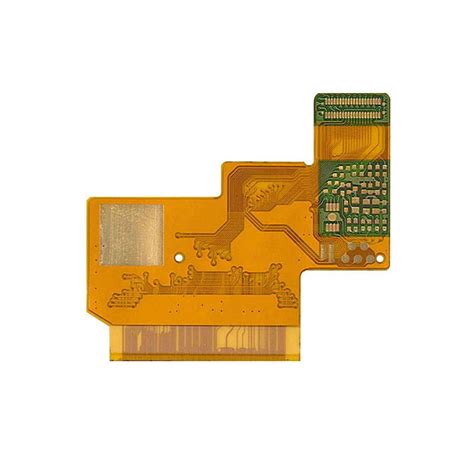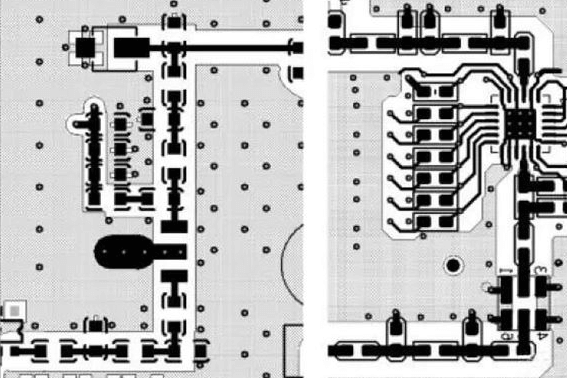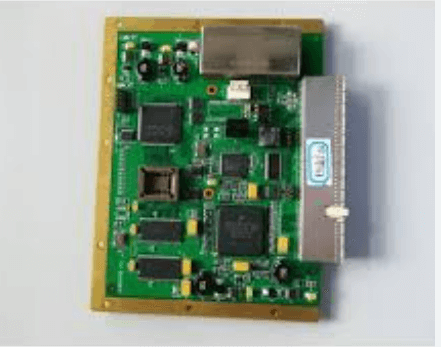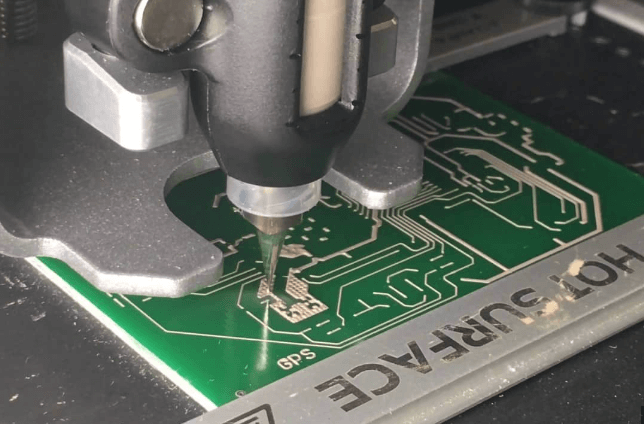Flex cable manufacturers
Innovations In Flex Cable Manufacturers
Flex cable manufacturers have been at the forefront of technological innovation, continually pushing the boundaries to meet the ever-evolving demands of various industries. These manufacturers play a crucial role in the development of flexible printed circuits (FPCs), which are essential components in a wide range of electronic devices. The innovations in flex cable manufacturing have not only enhanced the performance and reliability of these components but have also opened up new possibilities for their application.
One of the most significant advancements in flex cable manufacturing is the development of new materials.
Traditional flex cables were primarily made from polyimide films, which offered excellent thermal stability and mechanical strength. However, the need for more flexible, durable, and lightweight materials has led to the exploration of alternatives such as liquid crystal polymers (LCPs) and polyethylene naphthalate (PEN). These materials provide superior electrical properties, higher temperature resistance, and improved flexibility, making them ideal for use in advanced electronic devices.
In addition to material innovations, the manufacturing processes for flex cables have also seen substantial improvements.
The advent of laser direct structuring (LDS) technology has revolutionized the way flex cables are produced. This technique allows for the precise and efficient creation of complex circuit patterns on three-dimensional surfaces, significantly reducing production time and costs. Moreover, LDS technology enables the integration of multiple functions into a single flex cable, thereby enhancing the overall performance and reliability of the final product.
Another noteworthy innovation in flex cable manufacturing is the adoption of additive manufacturing techniques, commonly known as 3D printing.
This approach allows for the creation of highly customized and intricate flex cable designs that were previously impossible to achieve with traditional manufacturing methods. By leveraging 3D printing, manufacturers can produce flex cables with unique geometries and tailored electrical properties, catering to the specific needs of various applications. Furthermore, additive manufacturing reduces material waste and energy consumption, contributing to more sustainable production practices.
The miniaturization of electronic devices has also driven significant advancements in flex cable manufacturing.
As devices become smaller and more compact, the demand for ultra-thin and lightweight flex cables has increased. Manufacturers have responded by developing advanced fabrication techniques that enable the production of flex cables with thicknesses as low as a few micrometers. These ultra-thin flex cables are not only lightweight but also offer excellent flexibility and durability, making them ideal for use in wearable electronics, medical devices, and other compact applications.
Moreover, the integration of advanced testing and quality control measures has become a critical aspect of flex cable manufacturing.
Ensuring the reliability and performance of flex cables is paramount, especially in applications where failure is not an option. Manufacturers have implemented rigorous testing protocols, including electrical, mechanical, and environmental tests, to guarantee the highest quality standards. Additionally, the use of advanced inspection technologies, such as automated optical inspection (AOI) and X-ray inspection, allows for the early detection of defects and ensures that only the best products reach the market.
In conclusion, the innovations in flex cable manufacturing have significantly enhanced the capabilities and applications of flexible printed circuits. Through the development of new materials, advanced manufacturing processes, and rigorous quality control measures, flex cable manufacturers have been able to meet the growing demands of various industries. As technology continues to evolve, it is expected that further advancements in flex cable manufacturing will continue to drive the development of next-generation electronic devices, paving the way for a more connected and technologically advanced future.

Top Flex Cable Manufacturers In 2023
In 2023, the landscape of flex cable manufacturing has evolved significantly, with several key players emerging as industry leaders. Flex cables, known for their flexibility and durability, are essential components in a wide range of electronic devices, from smartphones to medical equipment. As the demand for more compact and efficient electronic devices continues to grow, the role of flex cable manufacturers becomes increasingly critical. Among the top manufacturers in this sector, a few companies stand out due to their innovation, quality, and market presence.
One of the foremost names in the industry is Sumitomo Electric Industries, Ltd.
With a long history of excellence in electrical and electronic products, Sumitomo has established itself as a leader in flex cable manufacturing. The company’s commitment to research and development has resulted in advanced flex cable solutions that meet the stringent requirements of modern electronics. Their products are known for their reliability and performance, making them a preferred choice for many high-tech applications.
Another significant player is Molex, a global provider of electronic solutions.
Molex’s extensive portfolio includes a wide range of flex cables designed to cater to various industries, including automotive, consumer electronics, and telecommunications. The company’s focus on innovation and customer-centric solutions has earned it a strong reputation in the market. Molex’s flex cables are engineered to provide superior flexibility and durability, ensuring optimal performance in demanding environments.
TE Connectivity is also a prominent name in the flex cable manufacturing industry.
Known for its comprehensive range of connectivity and sensor solutions, TE Connectivity offers high-quality flex cables that are widely used in industrial, automotive, and medical applications. The company’s emphasis on precision engineering and quality control ensures that their flex cables meet the highest standards of performance and reliability. TE Connectivity’s global presence and extensive distribution network further enhance its position as a top manufacturer.
In addition to these established companies, newer entrants like Flexium Interconnect, Inc. are making significant strides in the industry.
Flexium, based in Taiwan, has quickly gained recognition for its innovative flex cable solutions. The company’s state-of-the-art manufacturing facilities and commitment to quality have enabled it to compete with more established players. Flexium’s products are particularly noted for their application in consumer electronics, where the demand for compact and flexible components is high.
Furthermore, Amphenol Corporation deserves mention as a leading manufacturer of flex cables.
With a diverse product range that includes connectors, antennas, and flex circuits, Amphenol serves a broad spectrum of industries. The company’s flex cables are designed to offer exceptional performance in terms of flexibility, durability, and signal integrity. Amphenol’s strong focus on customer satisfaction and continuous improvement has solidified its reputation as a reliable supplier in the flex cable market.
As the industry continues to evolve, these top manufacturers are likely to play a pivotal role in shaping the future of flex cable technology. Their ongoing investments in research and development, coupled with a commitment to quality and innovation, ensure that they remain at the forefront of the market. The advancements made by these companies not only meet the current demands of various industries but also pave the way for future technological breakthroughs. In conclusion, the top flex cable manufacturers in 2023 are distinguished by their ability to deliver high-quality, reliable, and innovative solutions that cater to the ever-growing needs of the electronics industry.

Quality Standards In Flex Cable Production
In the realm of modern electronics, flex cables play a pivotal role, serving as the connective tissue that enables the seamless operation of various devices. The production of these essential components is governed by stringent quality standards to ensure their reliability and performance. Flex cable manufacturers must adhere to these standards to meet the high expectations of industries such as telecommunications, automotive, medical devices, and consumer electronics.
To begin with, the selection of raw materials is a critical step in the production of flex cables.
Manufacturers must choose high-quality materials that can withstand the mechanical stresses and environmental conditions to which the cables will be exposed. Copper, for instance, is commonly used for its excellent electrical conductivity and flexibility. The insulation and shielding materials must also be carefully selected to provide adequate protection against electromagnetic interference and physical damage.
Once the materials are chosen, the manufacturing process itself must be meticulously controlled.
This involves several stages, including cutting, laminating, etching, and assembling. Each stage must be executed with precision to ensure that the final product meets the required specifications. For example, during the etching process, the copper layers are patterned to create the desired circuit paths. Any deviation from the design can result in electrical failures or reduced performance.
Quality control is an integral part of the production process.
Manufacturers employ various testing methods to verify the integrity and functionality of the flex cables. These tests include electrical testing, where the continuity and resistance of the circuits are measured, and mechanical testing, which assesses the cable’s ability to withstand bending, twisting, and other forms of mechanical stress. Environmental testing is also conducted to ensure that the cables can operate reliably under different temperature and humidity conditions.
In addition to these tests, manufacturers must comply with industry standards and certifications.
Organizations such as the International Electrotechnical Commission (IEC) and the Institute of Electrical and Electronics Engineers (IEEE) have established guidelines for the design, production, and testing of flex cables. Compliance with these standards is essential for manufacturers to gain the trust of their customers and to ensure that their products can be used in critical applications.
Furthermore, continuous improvement is a key aspect of maintaining high-quality standards in flex cable production.
Manufacturers must stay abreast of the latest technological advancements and industry trends to enhance their production processes and product offerings. This may involve investing in new equipment, adopting advanced manufacturing techniques, or implementing more rigorous quality control measures.
The importance of quality standards in flex cable production cannot be overstated.
High-quality flex cables are essential for the reliable operation of electronic devices, and any compromise in quality can lead to significant consequences, including device failures, safety hazards, and financial losses. Therefore, manufacturers must prioritize quality at every stage of the production process, from material selection to final testing.
In conclusion, the production of flex cables is a complex and demanding process that requires strict adherence to quality standards. By selecting the right materials, controlling the manufacturing process, conducting thorough testing, and complying with industry standards, manufacturers can ensure that their flex cables meet the high expectations of their customers. Continuous improvement and a commitment to quality are essential for maintaining the reliability and performance of these critical components in the ever-evolving world of electronics.
Future Trends In Flex Cable Technology
Flex cable technology has been a cornerstone in the development of modern electronic devices, providing the necessary flexibility and durability required for a wide range of applications. As we look to the future, several trends are emerging that promise to revolutionize the industry and expand the capabilities of flex cables even further.
One of the most significant trends is the increasing demand for miniaturization.
As electronic devices continue to shrink in size, the need for smaller, more efficient flex cables becomes paramount. Manufacturers are investing heavily in research and development to create ultra-thin, high-performance flex cables that can meet the stringent requirements of next-generation devices. This trend is particularly evident in the medical and wearable technology sectors, where space is at a premium, and reliability is critical.
In addition to miniaturization, there is a growing emphasis on enhancing the durability and longevity of flex cables.
Traditional materials are being replaced with advanced composites and polymers that offer superior resistance to wear and tear. These new materials not only extend the lifespan of flex cables but also improve their performance in harsh environments. For instance, flex cables used in automotive and aerospace applications must withstand extreme temperatures and mechanical stress. By incorporating advanced materials, manufacturers can ensure that these cables maintain their integrity and functionality over extended periods.
Another key trend is the integration of smart technologies into flex cables.
The advent of the Internet of Things (IoT) has spurred the development of flex cables with embedded sensors and communication capabilities. These smart flex cables can monitor their own performance, detect faults, and even communicate with other devices in real-time. This level of intelligence is particularly beneficial in critical applications such as industrial automation and healthcare, where early detection of issues can prevent costly downtime and ensure patient safety.
Sustainability is also becoming a major focus for flex cable manufacturers.
As environmental concerns continue to rise, there is a push towards developing eco-friendly flex cables that minimize environmental impact. This includes using recyclable materials, reducing energy consumption during manufacturing, and designing products that are easier to dispose of at the end of their lifecycle. By adopting sustainable practices, manufacturers can not only reduce their carbon footprint but also appeal to environmentally conscious consumers and businesses.
Moreover, advancements in manufacturing techniques are playing a crucial role in shaping the future of flex cable technology.
Additive manufacturing, or 3D printing, is emerging as a viable method for producing complex flex cable designs with high precision and efficiency. This technology allows for greater customization and faster prototyping, enabling manufacturers to respond quickly to market demands and innovate more rapidly. Additionally, the use of automation and robotics in the production process is enhancing the consistency and quality of flex cables, while also reducing labor costs.
Finally, the global nature of the electronics industry means that collaboration and standardization are essential for the continued growth of flex cable technology.
Industry stakeholders, including manufacturers, researchers, and regulatory bodies, are working together to establish common standards and best practices. This collaborative approach ensures that flex cables are compatible with a wide range of devices and applications, facilitating seamless integration and interoperability.
In conclusion, the future of flex cable technology is being shaped by trends such as miniaturization, enhanced durability, smart integration, sustainability, advanced manufacturing techniques, and industry collaboration. As these trends continue to evolve, they will drive innovation and open up new possibilities for flex cable applications across various sectors. Manufacturers who stay ahead of these trends will be well-positioned to meet the growing demands of the market and contribute to the advancement of electronic technology.






